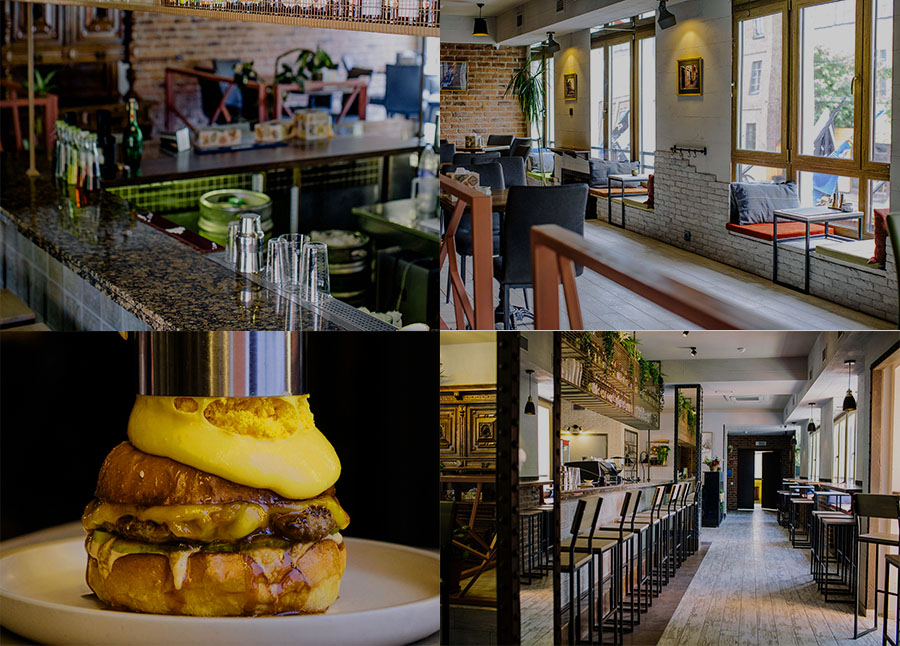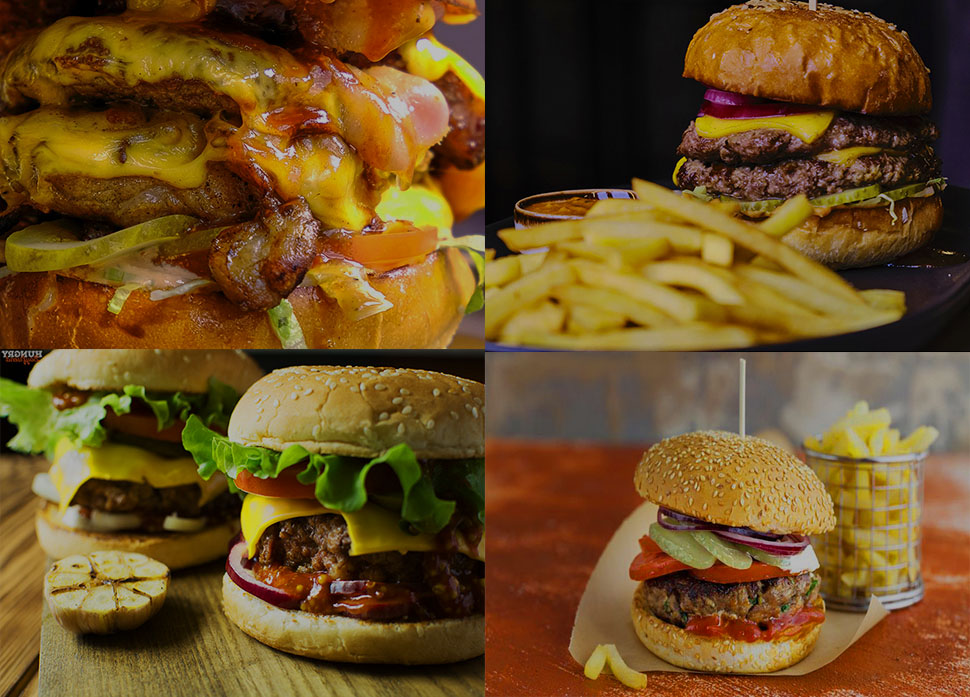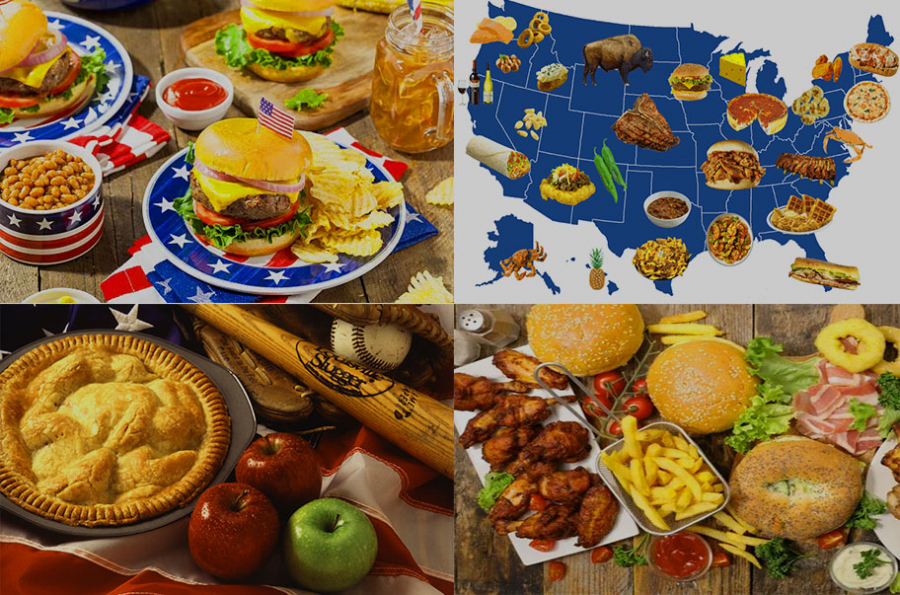The History of American Cuisine
Assistance from Native People
If it weren't for the kindness of the local inhabitants, English settlers would hardly have survived their first winter on the American continent. The locals introduced newcomers to pumpkins, berries, and local game. It is during this period that the story of the famous Thanksgiving turkey is intertwined. According to legend, an indigenous person helped the ill-prepared immigrants by teaching them to cultivate edible plants in rocky soil, catch fish, and hunt wild turkeys, known as "firkee." The nourishing meat of this large bird became the gift for which Americans have been giving thanks since 1621.
African Traditions
The dark chapters of American history have undoubtedly influenced the development of gastronomic habits as well. Enslaved people from Africa brought palm sugar, fried cornmeal, cornbread, greens, and new ways of cooking pork to American cuisine. Black chefs worked in wealthy homes in the South and traveled with aristocrats to other regions and countries, spreading their culinary traditions and adopting new ones. For instance, James Hemings, the chef of President Thomas Jefferson, accompanied his family to France, where he brought back the art of making ice cream, as well as French fries, macaroni and cheese, and copper cookware.
Multicultural Influence
Few countries in the world have witnessed such vast immigration from various nations as the United States throughout its history. Immigrants brought their own food habits, which became part of the American gastronomic landscape. Eastern Europeans introduced a fondness for sour foods, while Italians added garlic, olive oil, and aged cheeses. Mexican immigrants brought spicy peppers, corn tortillas, and rich, flavorful sauces.
The love affair between Americans and Asian cuisine deserves special mention. Chinese establishments began to appear in large numbers in the United States in the late 19th century. Chefs sought to adapt their dishes to local tastes, leading to the introduction of broccoli, bok choy, and General Tso's chicken. In the second half of the last century, with a new wave of immigration, Indian, Japanese, Thai, and other Asian influences were added to the American culinary scene.
Food on the Conveyor Belt
Processed foods, such as cake mixes and powdered eggs, existed even before the World Wars but reached new heights afterward. Innovations like canning and freezing, which were used to feed the troops on a massive scale, required a new market. American manufacturers shifted their focus to housewives.

Corporations created a world where food preparation became a burdensome task. Happy women in advertisements for canned tomatoes and dehydrated mashed potatoes called for liberation from kitchen slavery. Famous tin cans filled with soups and baked beans found their place in household pantries.
Life in major American cities was bustling around the clock. Workers and office clerks wanted to eat affordably and heartily during their short breaks, or even on the go. The swift development of fast food became the answer to this demand. It is often associated with American cuisine, although it is certainly much broader than this stereotype.
American main dishes
Burgers
Typical American food that can be found in any snack bar in the United States. According to recent statistics, the average American consumes about 60 burgers per year. The history of this iconic sandwich dates back to the late 19th century and is quite controversial. According to the most popular version, supported by the United States Library of Congress, the first burger in 1900 was made by Louis Lassen, the owner of Louis' Lunch restaurant in New Haven, Connecticut. A customer requested something he could eat on the go, and Lassen served him a patty between two slices of toast. However, advertisements from that time suggest that hamburgers were being prepared in America much earlier.
Most researchers believe that the birthplace of the dish is the German city of Hamburg – it was from there that the local recipe migrated across the ocean with immigrants. For instance, the first American burger chain, White Castle, adheres to the version that a chef named Otto Kuase from Hamburg invented the hamburger.
Another theory suggests that the predecessor of the modern burger was a cheap dish called steak hamburger, which appeared on American menus in the early 1870s. The beef patty with onions was served not on bread but on a plate. The name originated from the town of Hamburg, New York, where fine cows were raised. These steaks were popular in inexpensive cafes alongside bread and sandwiches, so placing the patty in a bun can be seen as a natural evolution.
Interestingly, the hamburger initially had a dubious reputation. It was mainly served in saloons, all-night food carts, and cheap lodging houses. One of the advertisements from the late 19th century stated, "Famous sandwiches with steak burgers always at hand! They will fill an empty stomach and satisfy even the devil himself." Such sinful associations indicated that the dish did not belong in polite society.
However, over the past century, the hamburger has drastically changed its reputation and become a favorite not only in America but also worldwide. It is served in both inexpensive cafes and high-end restaurants. This multicultural influence opens up incredible room for the chef's imagination: various sauces, cheeses, vegetables, and even fruits are added to the filling.

Barbecue
Barbecue for Americans is not just meat cooked over an open fire. It is an important social ritual, an opportunity to have a great time with family, friends, and neighbors. Almost every state has its own idea of "authentic" barbecue. In central Texas, it's a boldly seasoned brisket cooked over slow fire with oak or pecan wood chips. In South Carolina, they add a spicy sauce called "Carolina Gold" made from mustard, brown sugar, and vinegar to the meat. Memphis specializes in pulled pork, ribs, and a delightful semi-sweet tomato sauce.
Hot Dogs
The thin and elongated sausage was brought to the United States in the 1860s by German immigrants. Legend has it that a sausage vendor in St. Louis once ran out of gloves for serving and replaced them with buns. The hot dog immediately became a favorite food of the working class, especially in New York and Chicago. Since the late 19th century, it has been closely associated with baseball and is considered the favorite snack of fans.
Just like in the classic American dream, the "humble" origins of the hot dog did not hinder its journey to culinary stardom. In 1939, King George VI and Queen Elizabeth of England made their first visit to the United States. President Franklin D. Roosevelt and his wife Eleanor organized a picnic with hot dogs. The king asked in surprise, "What should I do with it?" To which Roosevelt replied, "Put it in your mouth and chew until you eat it." Thus, the dish became a symbol of informal high-level meetings – "hot dog diplomacy."
Apple Pie
The saying "as American as apple pie" is used in the States to express patriotism and is on par with staples like baseball and rock 'n' roll. How did it happen that in a country where even apples didn't originate, apple pie became part of its cultural identity?
Originally, only one variety of apples, called "crabapple," grew in North America, suitable only for making strong cider. In the mid-1600s, saplings of more edible apple varieties were brought to the continent by sea, but they didn't bear fruit for several more decades because there were no pollinators available. It was only when European honeybees were finally introduced that the story of the iconic American apple pie began.
The recipe for this dessert likely arrived in the States with immigrants from Sweden, the Netherlands, and Britain. However, by the beginning of the 20th century, the dish had been fully embraced and became an important component of American culture. The pie found its place in books and songs, and later, in movies.
American Cuisine Today
Americans take pride in their culinary traditions, but they are always open to trying something new. Professor Paul Freedman of Yale University notes in his book, "American Cuisine and How It Became So" that "diversity is the hallmark of American cuisine, and diversity includes abundance."
In the 1980s, there was a shift from bland standardized food to bold flavors and natural ingredients. The so-called "new American cuisine" emerged as a fusion movement that combines traditional flavors and cooking methods with influences from abroad, while emphasizing seasonal locally sourced produce. The result of this culinary revolution was the trend of "farm-to-table," which continues to dominate to this day.










